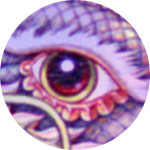Actually, it is not that far off from traditional Chaquan beginner work.
By that I am referring to Tan Tui. In 10 line Tan tui, you have one line being done over and over until you reach the end of the training area. They are generally linear.
So, you have #1, Two hand strike, elbow, sweep block to punch, then cover and kick...
But, there is also what is called (excuse the bad pinyin or spelling) Chuan Tan Tui - staked Tan Tui - where you do ONE of line one, flow to line 2 do one of it, then line three, etc...so you do one of each of the 10 lines back to back...up one line for the first 7, turning back for # 8 and then coming back for 8, 9, and 10.
Done this way, the aspect is not unlike Wubuquan....Where you have Yi Shou - block punch, Er Shou - kick punch, San Shou - block with Ma bu punch, Siu Shou - block down while stepping back to sitting stance and cover over to punch, Wu Shou - Thread palm up to Du Li throat strike or eyes... Liu Shou - Pu Bu down to groin or leg, Chi Shou - up to Gong Bu to block, grab and step up to strike from empty stance. Each of these could be done by themselves sort of like Tan Tui...
It is simply way to simple to say it is Modern or Traditional...
Traditional sets often seem like: Beginner sets - linear. Intermediate, you hit the corners and diagonals...but not circular. Advanced level, you take over ALL of the area with linear, diagonal, and circular stepping and movement forward, sideways, and backwards....
Now, of course, that is my perspective from a Chaquan viewpoint...which is not exactly a Shaolin approach.



 Reply With Quote
Reply With Quote


 +
+  =
=  & a
& a 







